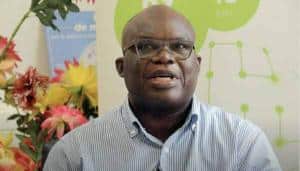
To activate translation, click the “CC” button along the bottom of the video player. Then click the Settings button next to it, select Subtitles/CC, and click on Auto-translate and select the language you want to read captions.
Pour activer la traduction, cliquez sur le bouton “CC” en bas du lecteur vidéo. Cliquez ensuite sur le bouton Paramètres à côté, sélectionnez Sous-titres / CC, puis cliquez sur Traduction automatique et sélectionnez la langue que vous souhaitez lire les sous-titres.
Rangelands in northern Kenya have historically been left out of large-scale development initiatives relative to other regions in Kenya. However, there is growing interest in utilizing the landscapes and natural resources found therein for large-scale and transnational public and private development projects. Recent examples of this are The Lake Turkana Wind Power Project, the Gilgel Gibe Dam Hydroelectric Power Project, and the LAPSSET Corridor Development Project. Much of the development will directly or indirectly affect pastoral access to community lands and utilisation of resources, and there are questions as to how to identify representative individuals requiring consultation before implementing large-scale development projects and who / how individuals and communities may be compensated for access to or displacement from their lands and resources. Currently, there is not a systematic, formal process guaranteeing land rights within a community land system. Kenya’s Community Land Act of 2016 was the first step in legitimizing and protecting the land rights of pastoral communities; however, implementation has been slow and the legislation does not explicitly provide a practical plan for enacting and enforcing land rights within these communities. Technology applications, such as blockchain, may provide a tool to aid in formally registering community lands, thus providing a system for community recognition and consultation during development planning and subsequent appropriate compensation. This talk will highlight some of the issues found in the current land tenure system as it applies to development in northern Kenya, the ways in which blockchain may address these issues, and discuss future directions for research into these applications.
Les parcours dans le nord du Kenya ont toujours été exclus des initiatives de développement à grande échelle par rapport à d’autres régions du Kenya. Cependant, il existe un intérêt croissant pour l’utilisation des paysages et des ressources naturelles qui s’y trouvent pour des projets de développement publics et privés à grande échelle et transnationaux. Des exemples récents en sont le projet éolien du lac Turkana, le projet hydroélectrique du barrage Gilgel Gibe et le projet de développement du corridor LAPSSET. Une grande partie du développement affectera directement ou indirectement l’accès pastoral aux terres communautaires et l’utilisation des ressources, et il y a des questions sur la façon d’identifier les individus représentatifs nécessitant une consultation avant de mettre en œuvre des projets de développement à grande échelle et qui / comment les individus et les communautés peuvent être indemnisés l’accès ou le déplacement de leurs terres et de leurs ressources. Actuellement, il n’y a pas de processus formel systématique garantissant les droits fonciers au sein d’un système foncier communautaire. La loi de 2016 sur les terres communautaires du Kenya a été la première étape de la légitimation et de la protection des droits fonciers des communautés pastorales; cependant, la mise en œuvre a été lente et la législation ne prévoit pas explicitement de plan pratique pour promulguer et faire respecter les droits fonciers au sein de ces communautés. Les applications technologiques, telles que la blockchain, peuvent fournir un outil pour aider à enregistrer officiellement les terres communautaires, fournissant ainsi un système de reconnaissance et de consultation de la communauté pendant la planification du développement et une compensation appropriée ultérieure. Cet exposé mettra en évidence certains des problèmes rencontrés dans le système foncier actuel tel qu’il s’applique au développement dans le nord du Kenya, les façons dont la blockchain peut résoudre ces problèmes, et discutera des orientations futures de la recherche sur ces applications.
3 Responses
Very interesting research. I assume you will also look at the digital divide. Since there are customary blockchains, as you mentioned, how will the use of blockchain technology impact communities. If some pastoralists not opt in to use the new technology, will their rights be impacted?
I agree, very interesting research! I would encourage you to read about the pitfalls of formalisation prior to your research (I can suggest some literature that has been very useful to me, if you’d like), and also to try to situate the evaluation of the technology’s risks and potentials within the strategic needs of pastoralists themselves (e.g. to combat enclosures of the commons undermining their way of life, to secure strategic benefits from “development” projects, etc.). Otherwise, wish you the best of luck with your research!
Laura German (lgerman@uga.edu)
This is a very innovative research idea as both Marco and Laura noted. Whilst this could be a useful tool, it is usually the differential power dynamics between pastoralists and those with vested interests in their land which matter. Maybe you could also watch Laura’s video as well.
Comments are closed.